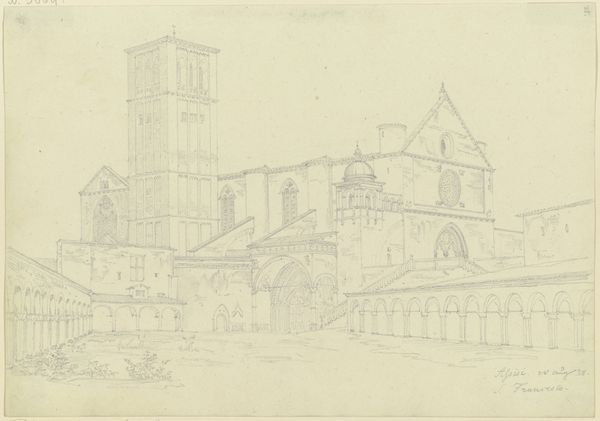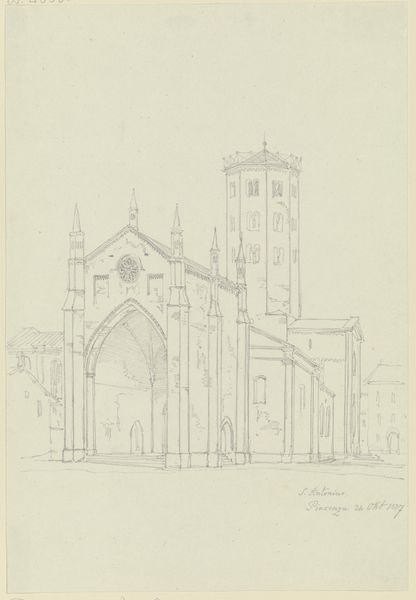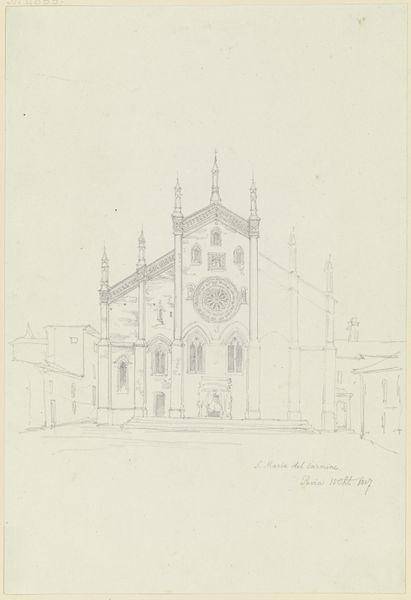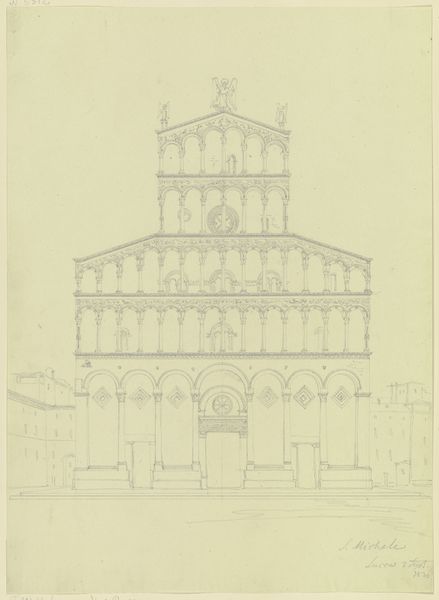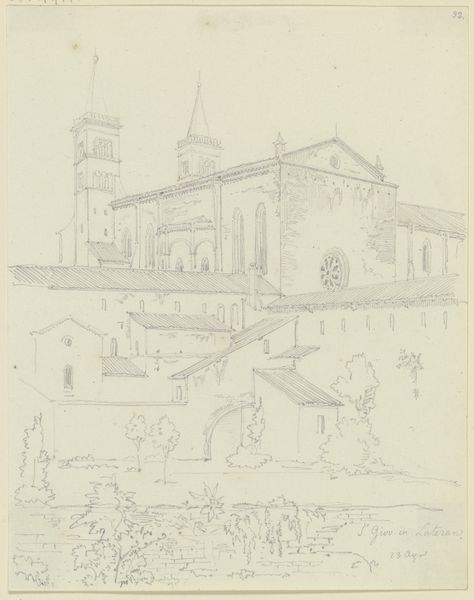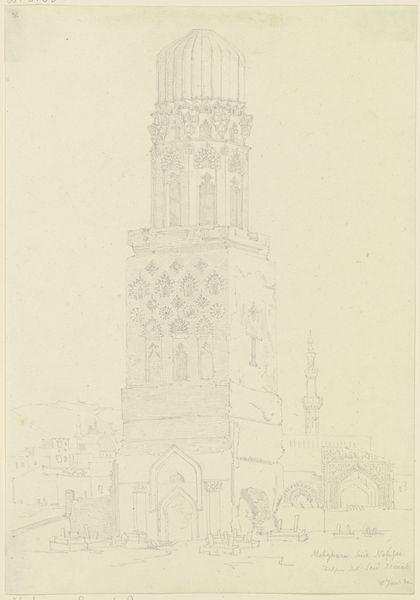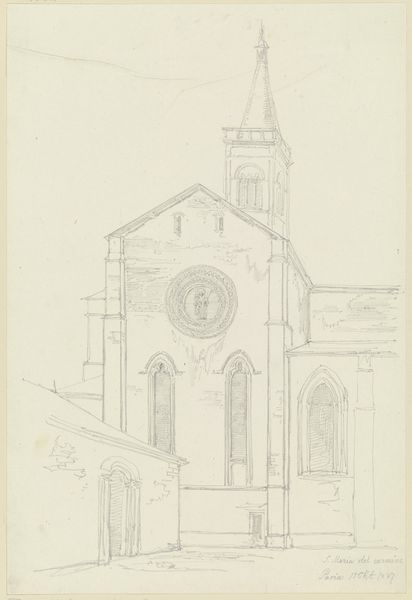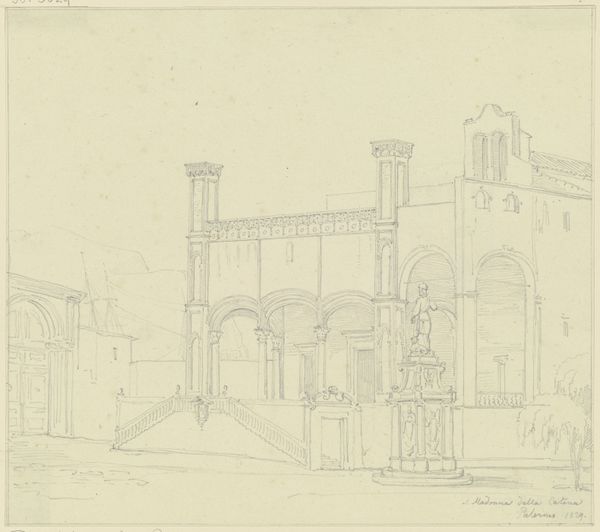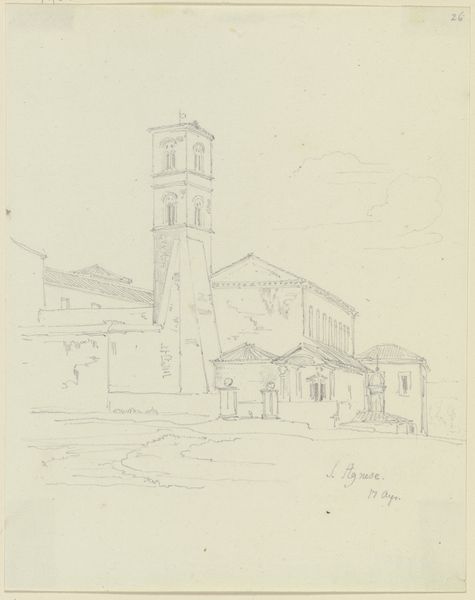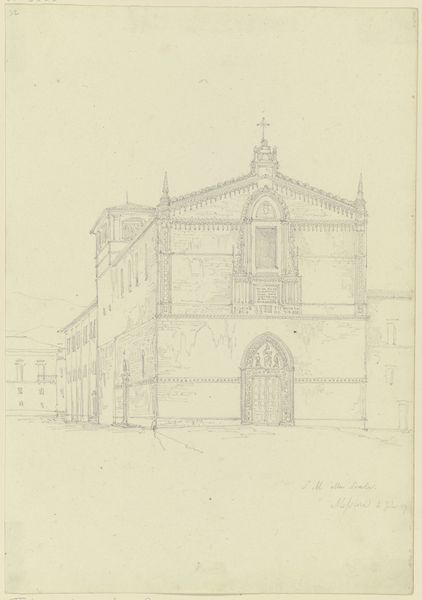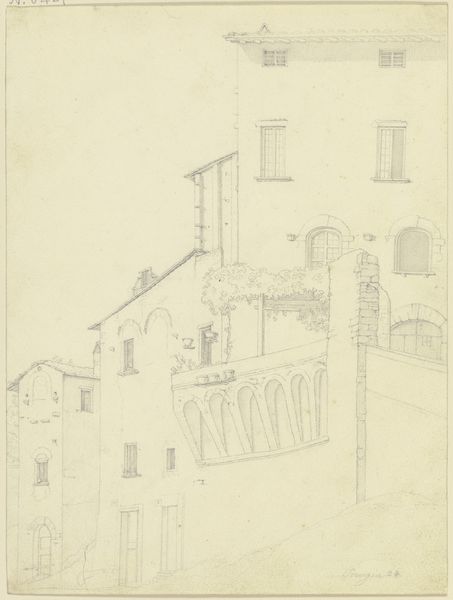
Copyright: Public Domain
Curator: Let’s take a moment to appreciate this landscape drawing by Friedrich Maximilian Hessemer, titled “S. Francesco in Assisi,” created in 1828. Editor: My immediate impression is one of fragility. The pale pencil lines seem barely tethered to the paper, lending an ethereal quality to the imposing architecture. Curator: The choice of rendering this important pilgrimage site in pencil resonates with the period’s shift towards valuing the immediacy of personal experience over the grandeur of Neoclassicism. Hessemer isn’t just showing us a church, he’s documenting his own encounter with it, imbuing the sacred space with personal introspection. Editor: I’m particularly struck by the repetition of geometric forms. The circles of the rose window and smaller oculus echo each other, while the severe angles of the facade are juxtaposed with the rounded arches of the adjacent structures. This play of shapes creates a captivating visual rhythm. Curator: Considering the Basilica’s connection to Saint Francis, we can examine how the artwork speaks to themes of piety and humility. Hessemer avoids dramatizing the architecture, and this perhaps reflects the essence of Franciscan values which eschew ostentation and instead embrace simplicity and accessibility. Editor: And perhaps Hessemer's use of line reinforces this accessibility. Notice how his consistent weight of the line suggests how line, as the simplest form, is sufficient to capture architectural depth. Curator: It’s tempting to see a parallel with contemporary conversations around class. Even today the way we view spaces has a lot to say about our experiences. But what does it say to be inside and what does it say to be outside looking in, in any number of modern-day "basilicas"—schools, financial institutions, governments? Editor: True. From the formalist perspective, the composition’s restraint—its understated nature, is so compelling in how little he used to communicate scale, shape and subject. Curator: In examining how architecture has historically both enabled and restricted, we are equipped to consider our present and future use of the spaces that influence and reflect who we are. Editor: I agree. Thank you for prompting a more considered perception.
Comments
No comments
Be the first to comment and join the conversation on the ultimate creative platform.

